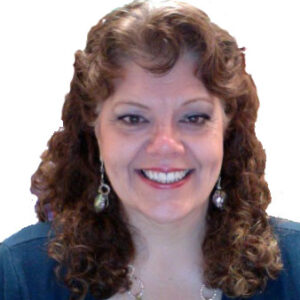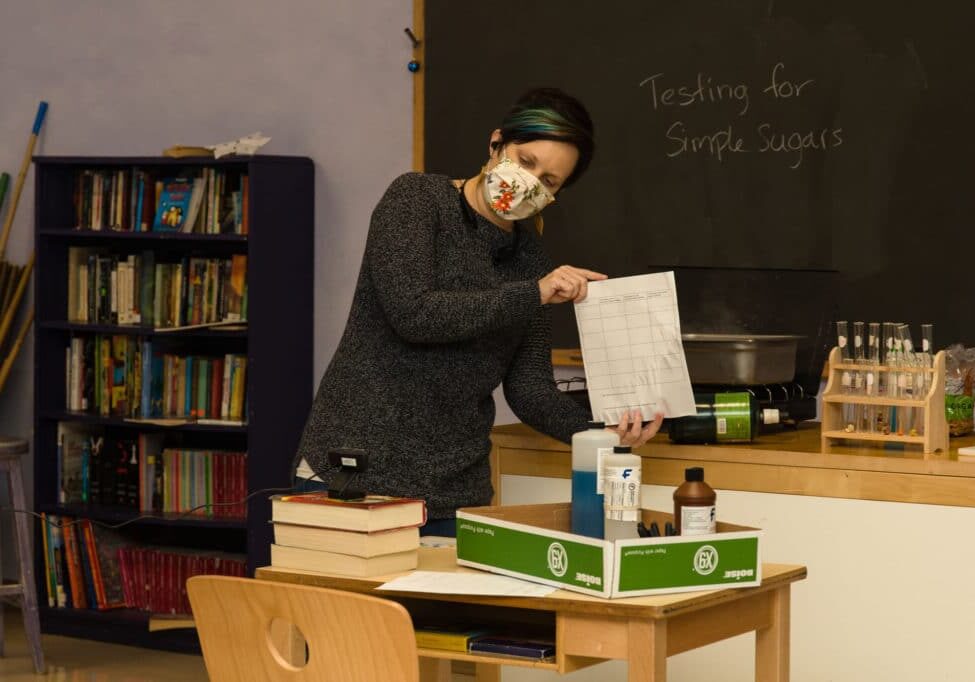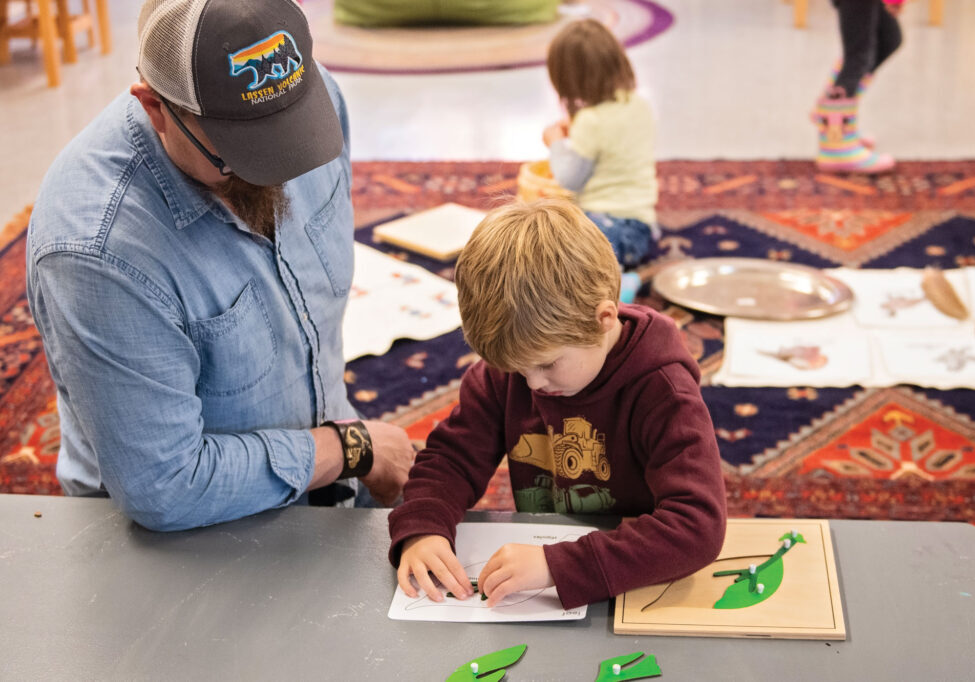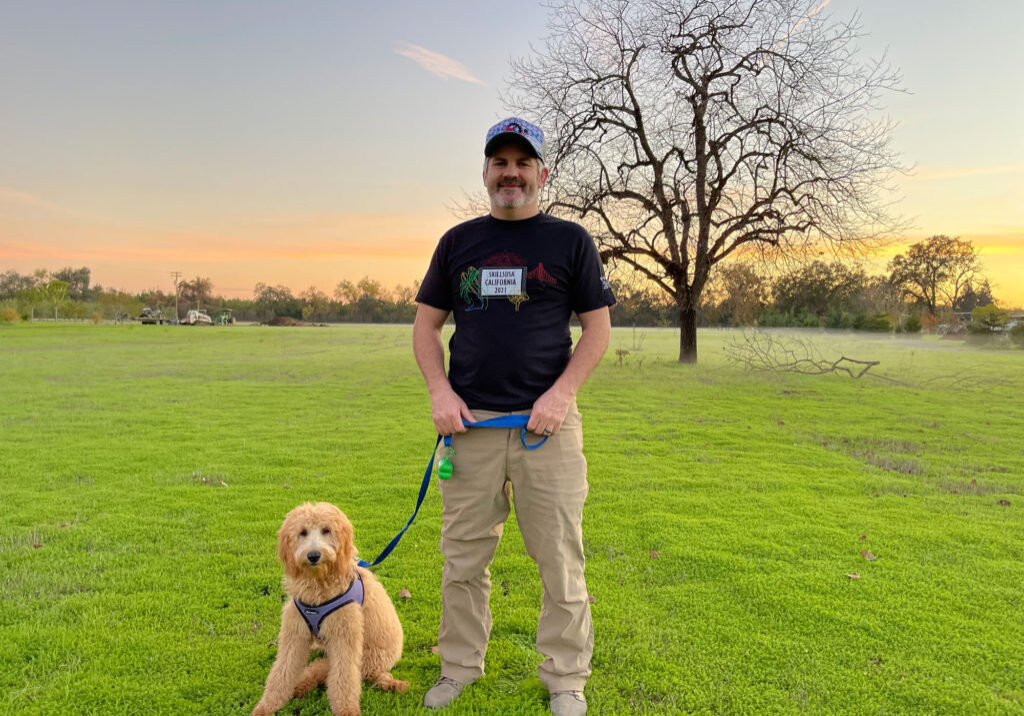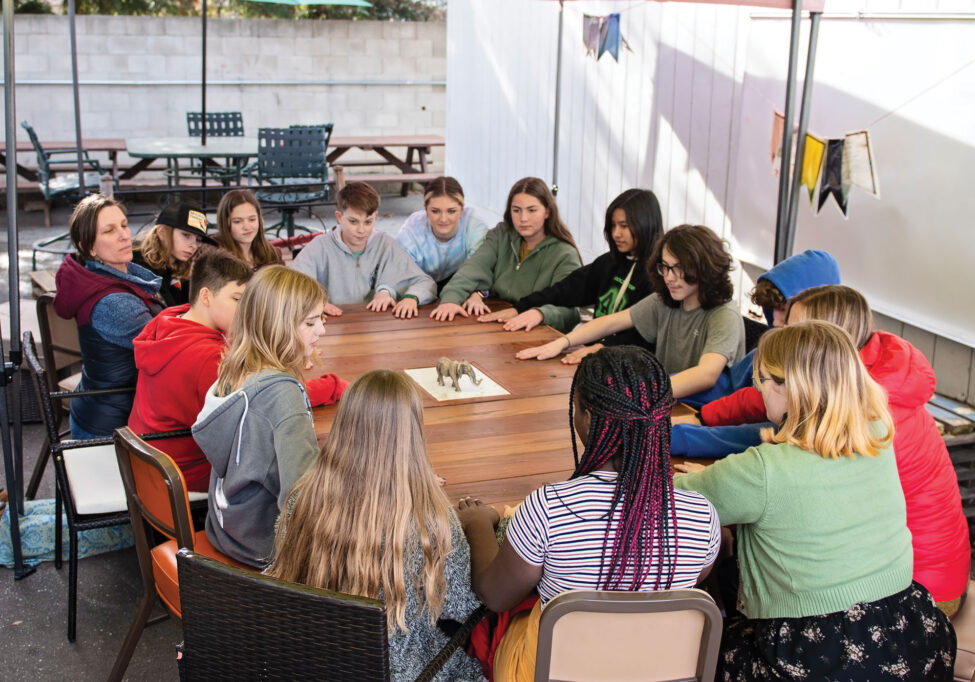“Humans learn most easily and naturally in a holistic way,” Cate Clother, founder and director of Cedar Grove School, a Waldorf-inspired multicultural heritage school, says. Waldorf curriculum is built around the way people most easily learn. Cate explains, “We learn best when our head, heart and hands are fully engaged, when arts and academics are integrated.”
Cate grew up in Dunsmuir in a single-parent family struggling with poverty and addiction. Through hard work and perseverance, she won a Ford Family Foundation scholarship which enabled her to major in art at Westmont College in Santa Barbara. While there she learned about Waldorf principles. “I was so impacted by this holistic way of learning and imagined its therapeutic potential for children struggling with intergenerational poverty and trauma.”
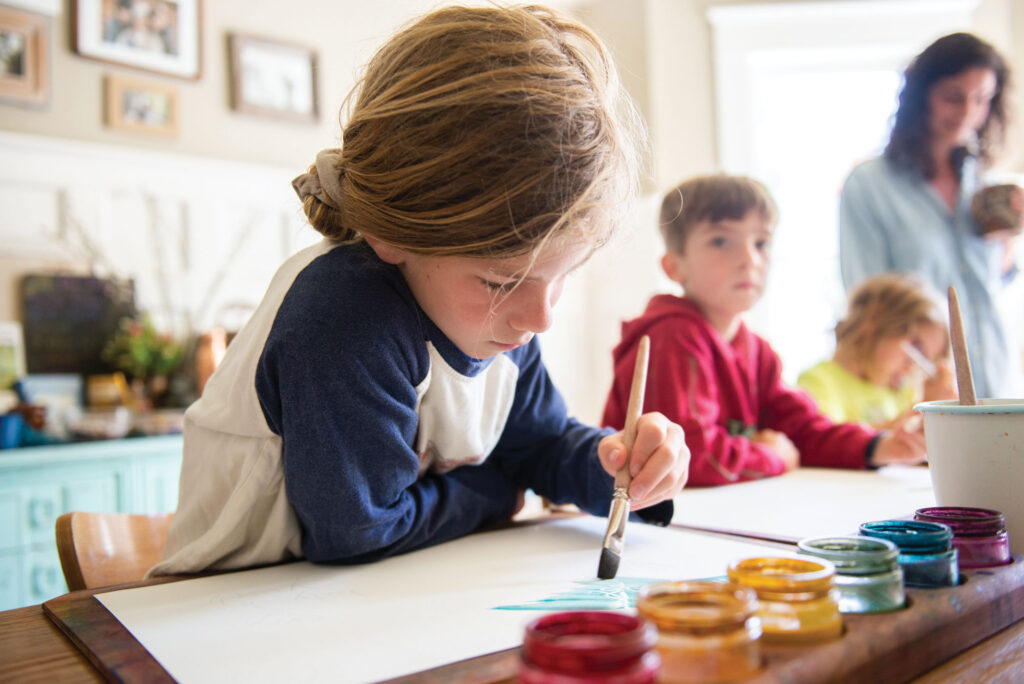
Realizing a dream in Dunsmuir
After earning a master’s degree in sustainability education, Cate moved with her husband into an intentional community in Pennsylvania called Camphill Soltane, a community founded on Waldorf principles, where they lived and worked for 10 years with adults with disabilities. Residents worked in biodynamic orchards and gardens and crafted artisan goods in a ceramics studio, a weaving studio and a bakery. “I experienced the many benefits of practical arts for people with disabilities and those facing other blocks to employment,” Cate says. “I envisioned bringing Waldorf education and vocational arts to Dunsmuir.”
Five years ago, Cate returned to Dunsmuir with her husband and three children to realize her dream. Last year she purchased the former Methodist Church building in Dunsmuir, which had been closed for 20 years. Many parents and community members joined in the work of renovating spaces for classrooms, practical arts and play.
Holistic deep learning
Waldorf curriculum follows a block schedule: students learn in three-to-six-week blocks, during which one subject is the focus. Lesson blocks are holistic and interdisciplinary, with the arts, sciences, history, and literature interwoven into the topic of the block. For example, the fifth grade study of Ancient Greece includes Greek mythology, geography, math, music, visual and performing arts, and even physical education as the children create and compete in their own pentathlon.
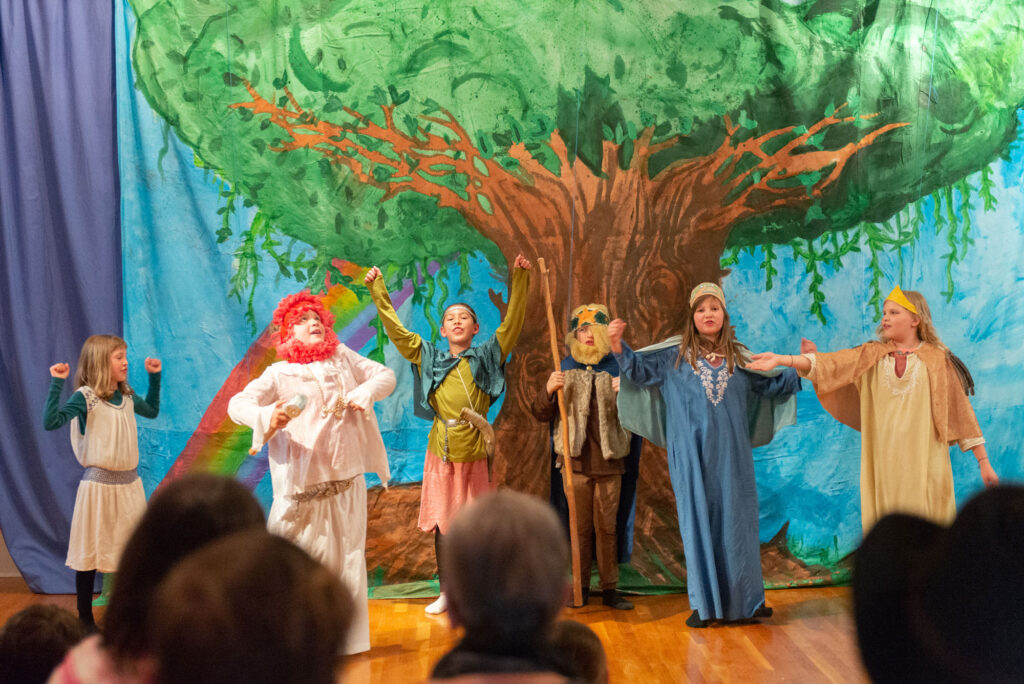
The fourth grade class performs “The Theft of Thor’s Hammer” as part of their Nordic Mythology block.
A calming environment for sensitive children
Children are led through opening movement and songs at the beginning of each class to get them settled, get their wiggles out and be present in their bodies and in the classroom. “We focus on teaching imaginatively through the arts as a way to help learning become practical and alive, and honor each child’s unfolding process, respecting that this happens at whatever pace is right for the individual child,” Cate explains. Natural materials are used throughout, including plant-based watercolors, beeswax, wool, wood and chalk. Walls are softly painted with watercolors in a serene pattern. The main lesson teacher follows a class all the way through from first through eighth grades, helping to ease anxiety. “They develop a beautiful relationship with the children in their class,” offers Cate. “Coming to know each child and their individual needs and learning styles and helping them to blossom.”
Other classes include music, Spanish and handwork. First graders make their own knitting needles and then learn to knit. All students participate in movement classes called eurythmy, an expressive movement art taught in Waldorf schools.
Waldorf education is typically very expensive, but Cate’s dream is to make Waldorf education accessible to all, so Cedar Grove offers a sliding scale tuition. There is already a great deal of interest in Cedar Grove School. Families from Mount Shasta, Lake Shastina, Weed, Castella and as far away as Montague bring their children to attend the school.
Cedar Grove Center for Rural Renewal
Cate also founded the nonprofit Cedar Grove Center for Rural Renewal dedicated to the revitalization of Dunsmuir and surrounding areas. The center will offer practical afterschool arts classes for children and youth and to adults in the evenings, beginning in the near future. She recently received an 80-year-old letter press that belonged to the old Yreka newspaper, and she hopes to hold printmaking classes. She has also received a donation of four floor looms for weaving classes.
But Cate’s vision reaches even further! Through the center she hopes to help organize vocational training opportunities throughout the county. “In Dunsmuir alone,” she enthusiastically exclaims, “we have a metal smith, a surfboard shaper, a leather smith, stained glass artists, weavers, woodworkers, printmakers, photographers, ceramicists, gardeners and retirees who have a wealth of knowledge and are looking for ways to give back.” She wants to link these craftspeople with apprentices to whom they can pass on their knowledge and skills.
She also plans to hold community workshops on non-violent communication and a process called Deep Democracy, to help community members who may be divided along ideological or political lines find common ground and work together to revitalize the town.
Cate Clother envisions an invigorated Dunsmuir where community members work together to create an environment where everyone can thrive. With the experience, education and enthusiasm she brings to her hometown, she has already come a long way to realizing her dreams. We can’t wait to see what she accomplishes next!
Posted in: Education, Siskiyou County News
Comment Policy: All viewpoints are welcome, but comments should remain relevant. Personal attacks, profanity, and aggressive behavior are not allowed. No spam, advertising, or promoting of products/services. Please, only use your real name and limit the amount of links submitted in your comment.


